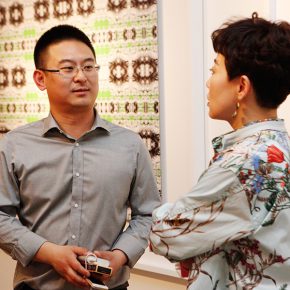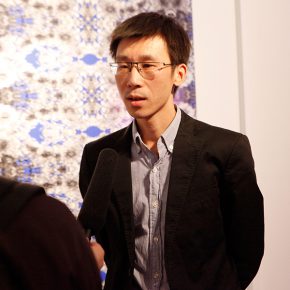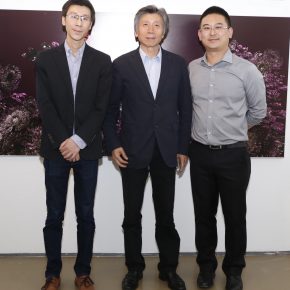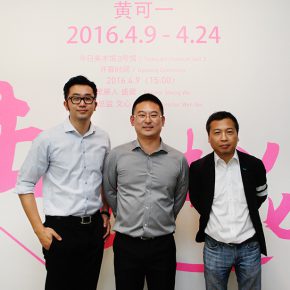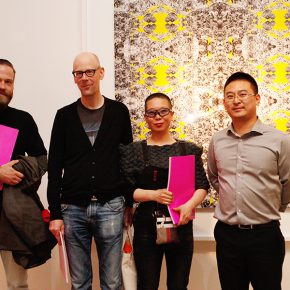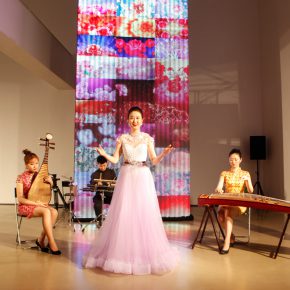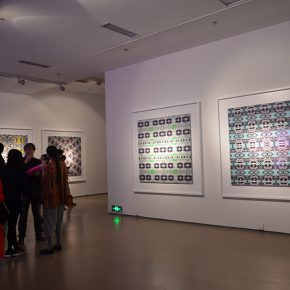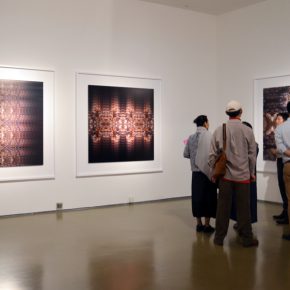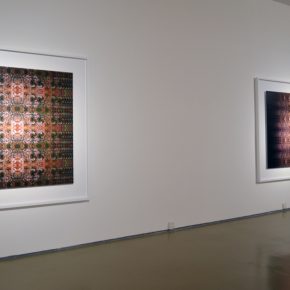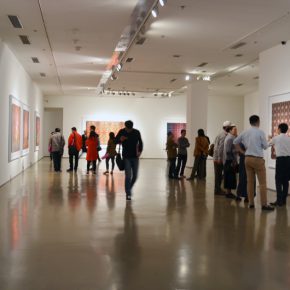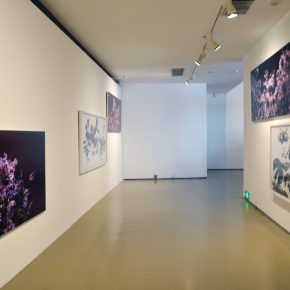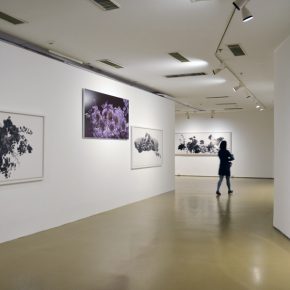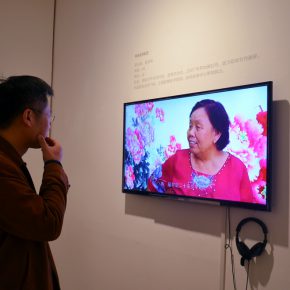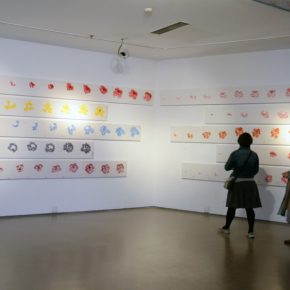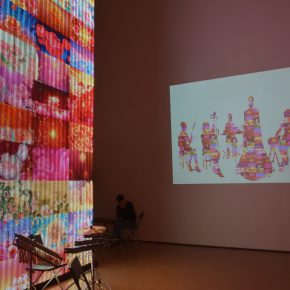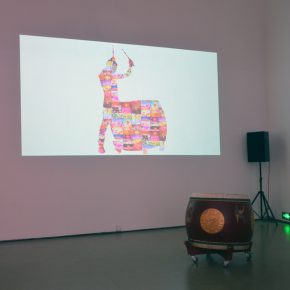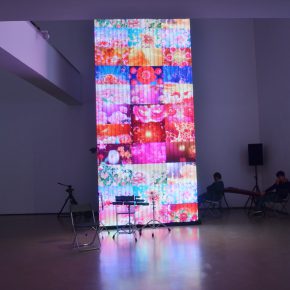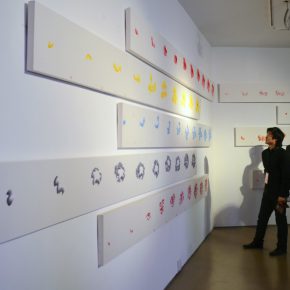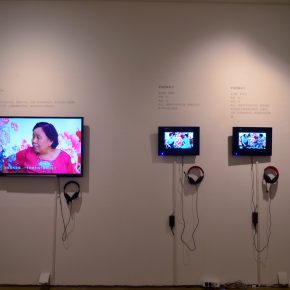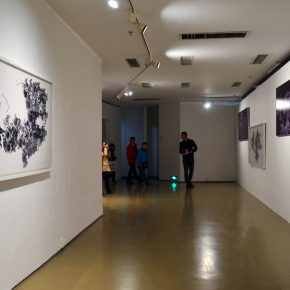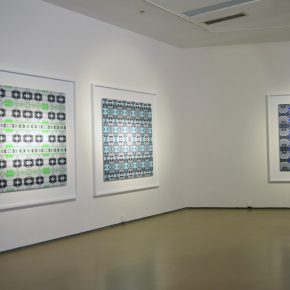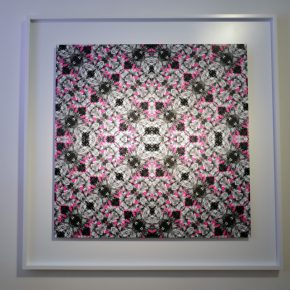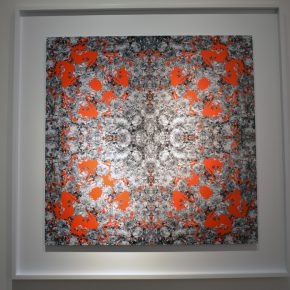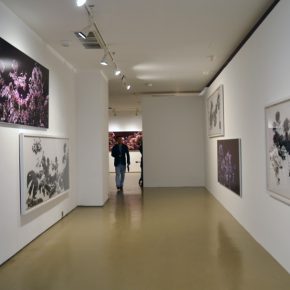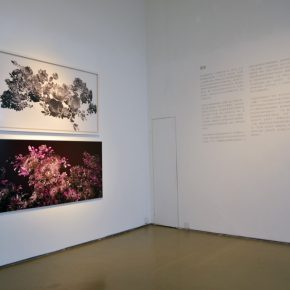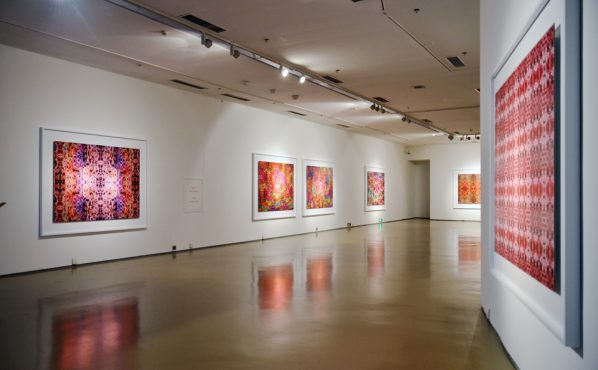
The exhibition “Huang Keyi: Everybody Loves Peonies” opened at Today Art Museum on April 9, 2016, the traditional Chinese theme “peony” is the creative subject and the object of study of the artist. Huang Keyi once searched for the most popular art style on taobao.com, more than 400,000 relevant pieces of information on traditional Chinese painting of the “peony” emerged, and these works were cheap, of an unified style, easily replicated, it was as easy as buying daily products which was completely different from the art circle where the artist lived. Starting from this point, Huang Keyi starts a series of thinking on the peony which is the most familiar subject and the most popular in China, as well as the related creation, propagation and aesthetic of the peony.
Huang Keyi said the whole exhibition was intended to discuss the public aesthetic issue in contemporary China with the influence of the internet, he said, “There is a gap between public aesthetics and contemporary art, as an artist, he hoped to understand how this gap was formed, how to change it.” So that when Huang Keyi arrived in the “Peony Village” – Pingle Village in Luoyang, Henan Province, for a field visit of the biggest producing area of peony paintings and interviewed several villagers who are especially good at peony paintings. From children to old men, almost all the families draw peonies in the village. The exhibition hall showcases the process of the artist’s research in the form of video and collected data. In addition, it also presents how the villagers from the peony village skillfully use the painting pattern of “drawing a peony with ten strokes”.
The exhibition displays Huang Keyi’s 42 works that have been created since last year, and it is a new series of multidimensional simulation based on 3D images, and it is also the reproduction of visual images of the known pattern of “peony”. On the ground floor of building 3, it features 10 sets of work which constitute the first series, and each set reflects the contrast between “the crystal peony" and “the ink painted peony”, while these works are based on a duplication of the traditional pattern of peony, retaining the familiar element of the style. The second series and the third series on the second floor are a variety of trials of “variation” on the pattern of peony – the first one deconstructs and reorganizes the structure of the crystal peony, to create a new visual effect; the second one is a block of black-and-white crystal peonies, blended in with the colors of “red, orange, yellow, green, blue, cyan, purple”. In the past, the masses thought the aesthetic value of peonies were the bright colors and graceful posture, now the artist is trying to use deconstruction and recombination to create a new image of peonies
But the artist thinks more than that. He received a fund to buy the peony paintings on taobao.com through on-line crowd funding, the artist declared that “It’s only one RMB between you and the contemporary art”, which arouses enthusiasm in the public who broadly participated into it. Now the e-commerce has permeated into every corner of our lives, even the villagers of the peony village also get rid of the traditional one-way marketing mode and apply for an online sales account. The exhibition curator Sheng Wei said that, the artist’s creation also included the reproduction of the network of “product”: on the one hand, through the commercial crowd funding, the intellectual elite and technical elite disappeared, the standard to enter the “art” disappeared too, and then it became a process of pooling the wisdom and efforts of everyone. On the other hand, there is still an unbridgeable chasm between the elite art and public aesthetics, and all things are still the creation of the system of “contemporary art”. The artist places himself on the border between both, to carry on the question about the system and relationship.
Text by Lin Jiabin, Photo by Lin Jiabin, Today Art Museum;
Translated by Chen Peihua and edited by Sue/CAFA ART INFO
About the artist?
Huang Keyi was born in Hunan province in 1980. He studied in the Department of Printmaking, CAFA after graduating from the High School Affiliated to CAFA, and now he works at CAFA. He had co-created many famous works with another Chinese artist Chen Zhuo, including the cartoon film Yi and contemporary works of art like Chinese Carnival and Super Big Factories. His works have been exhibited in many places, such as the National Art Museum of China, Pompidou Center in France, Art College of Peking University, Beijing International Exhibition Center, Museum of Contemporary Art in Shanghai, and Nanjing Museum and Thessaloniki, Greece. He has won an excellence award in the 4th “National Youth Fine Art Exhibition”, an Arte Laguna Art Prize for contemporary art in Italy and so on.


